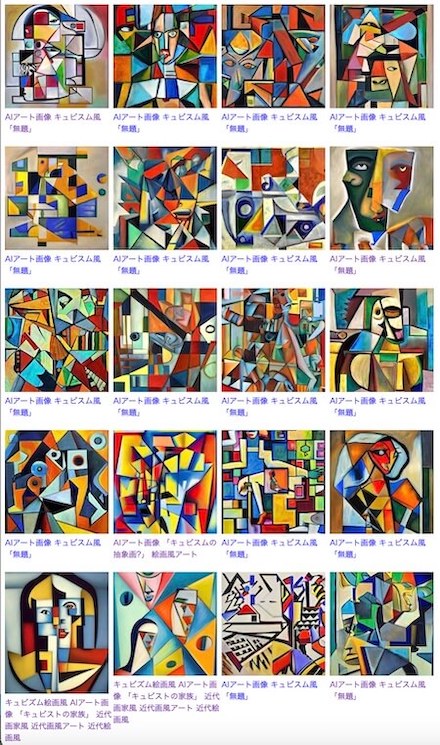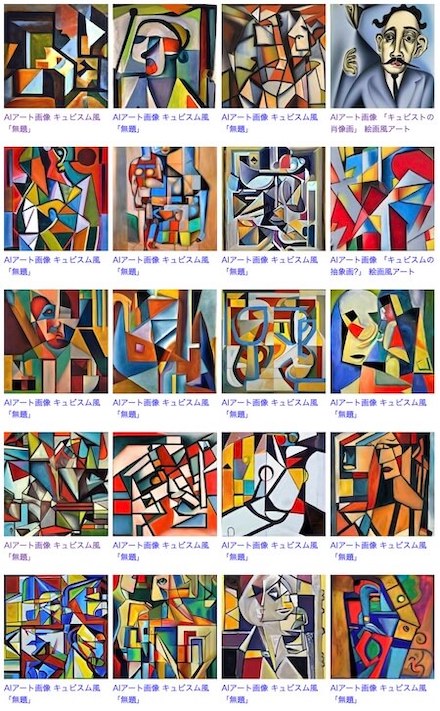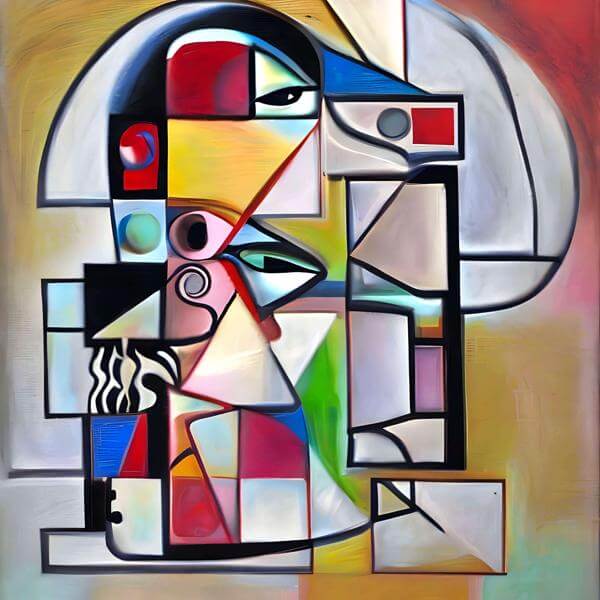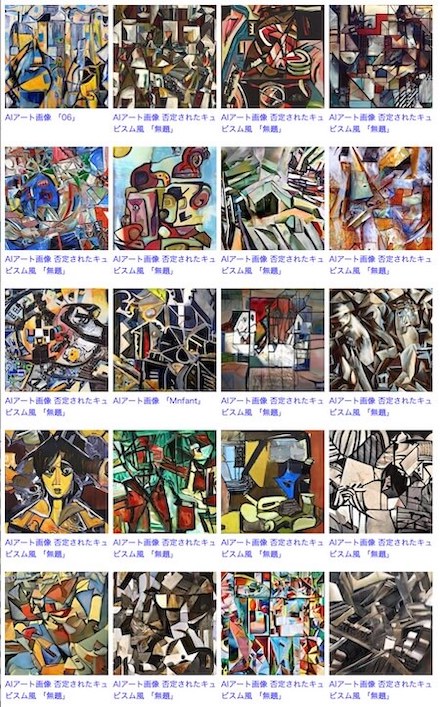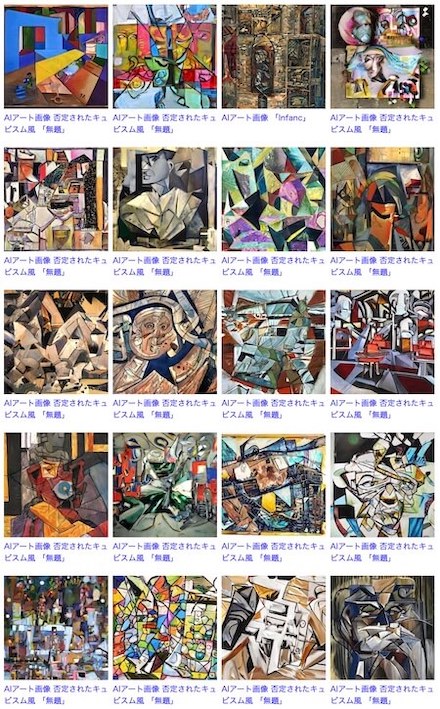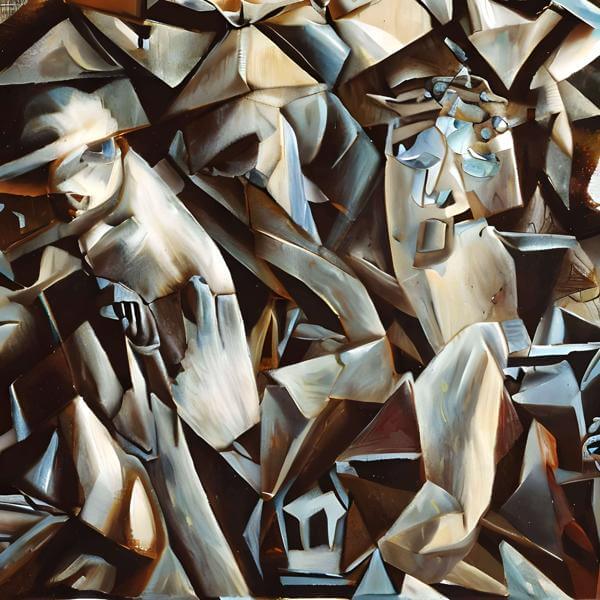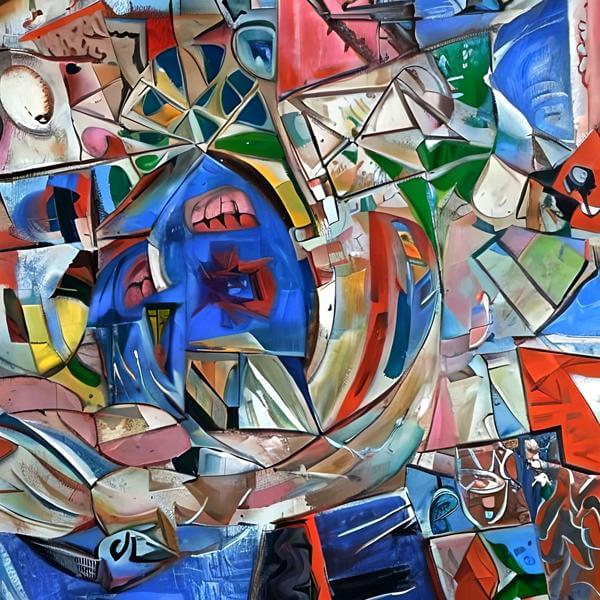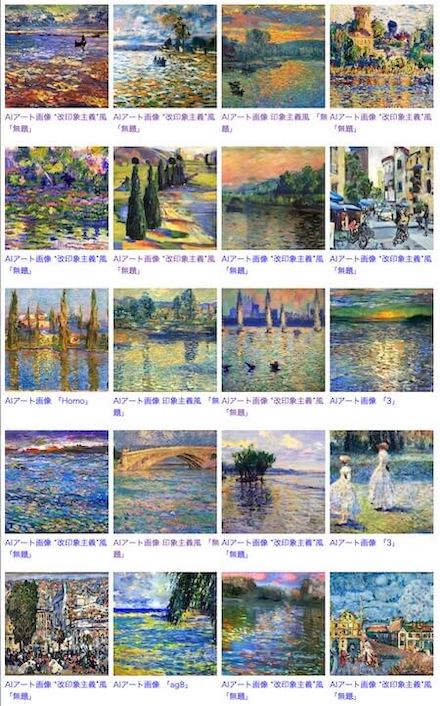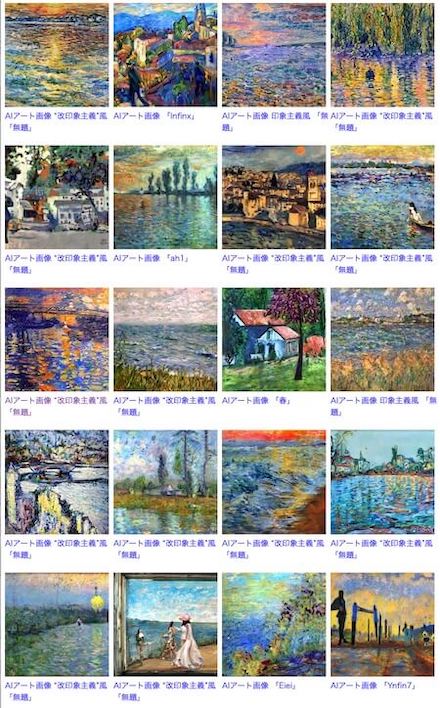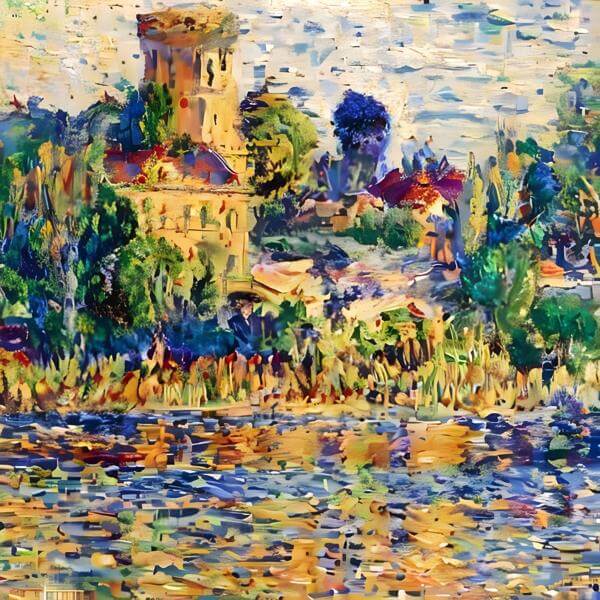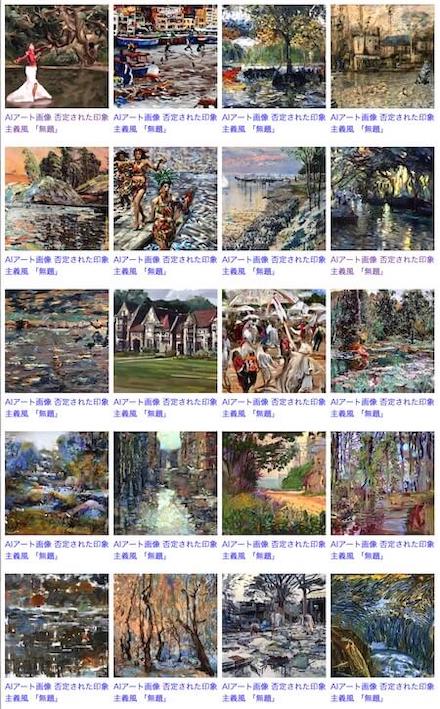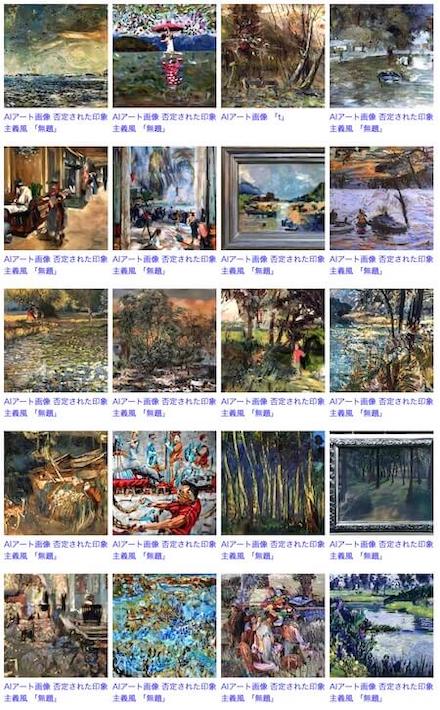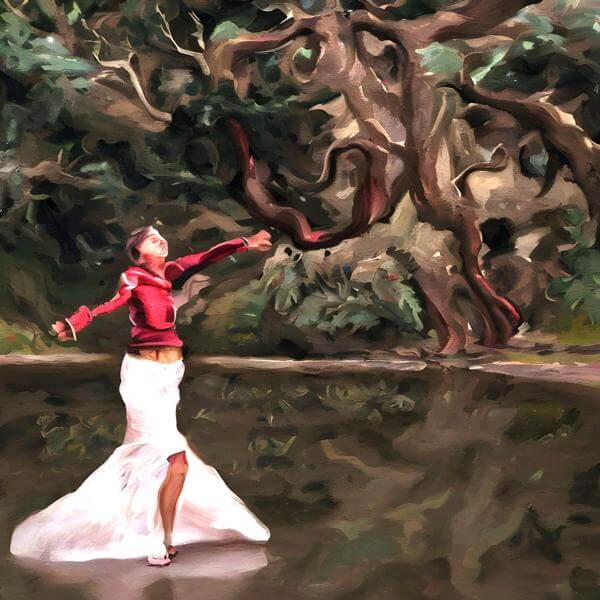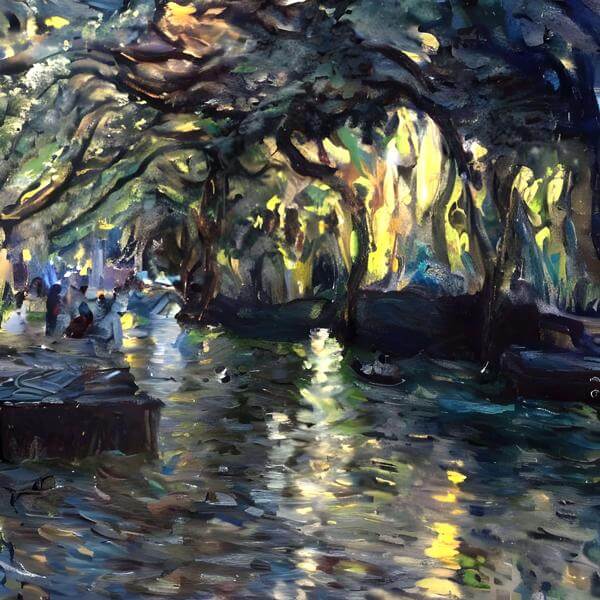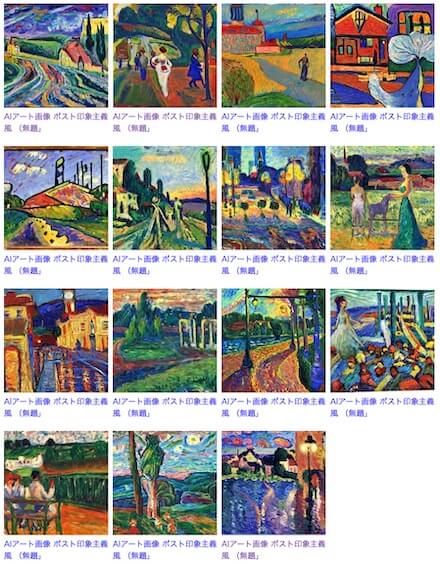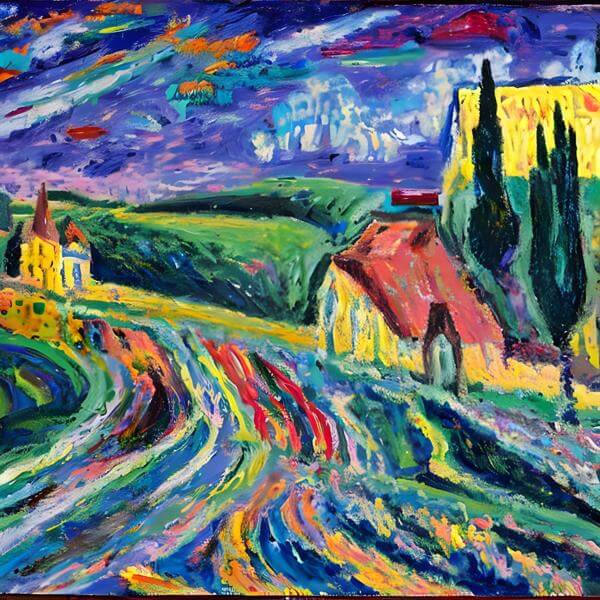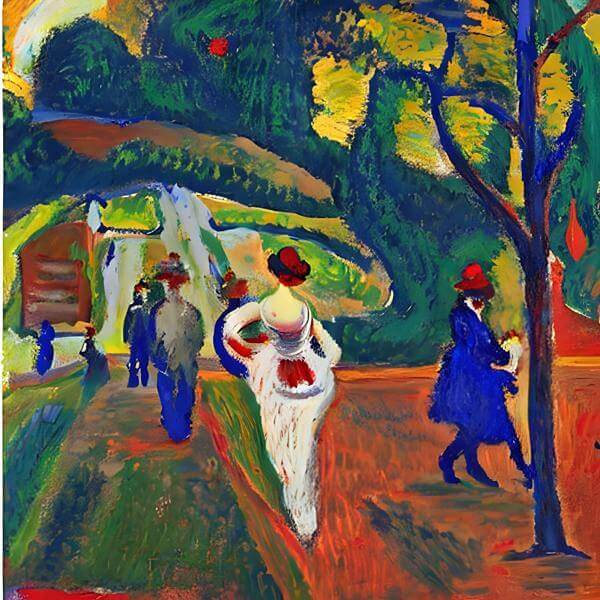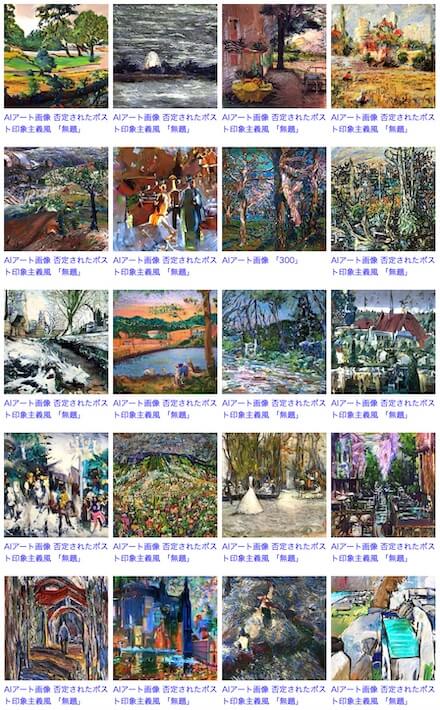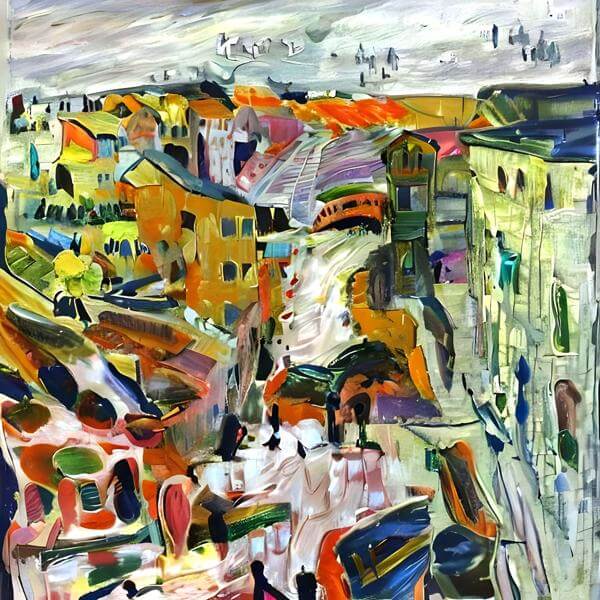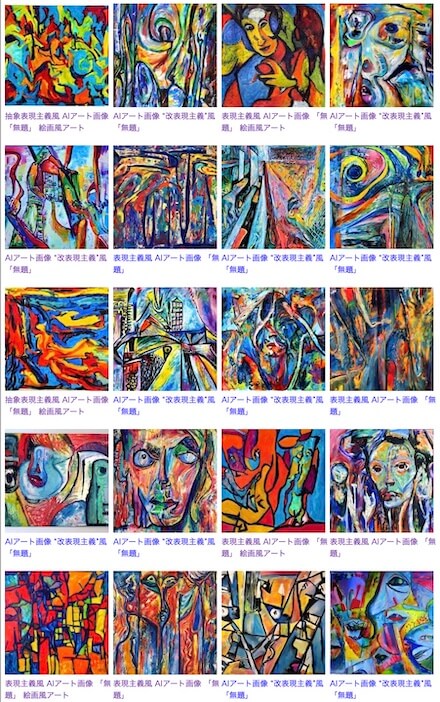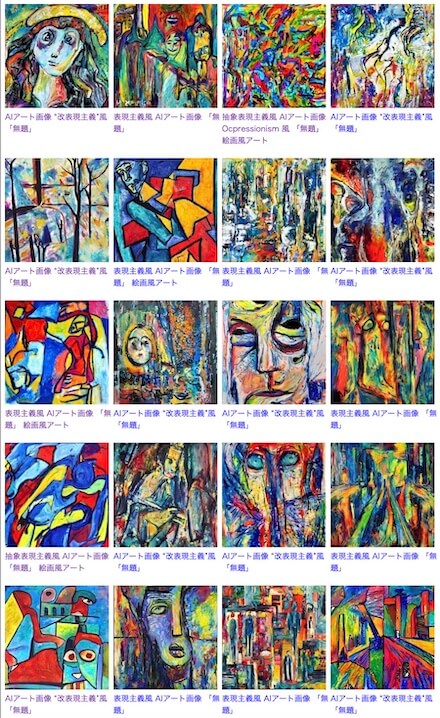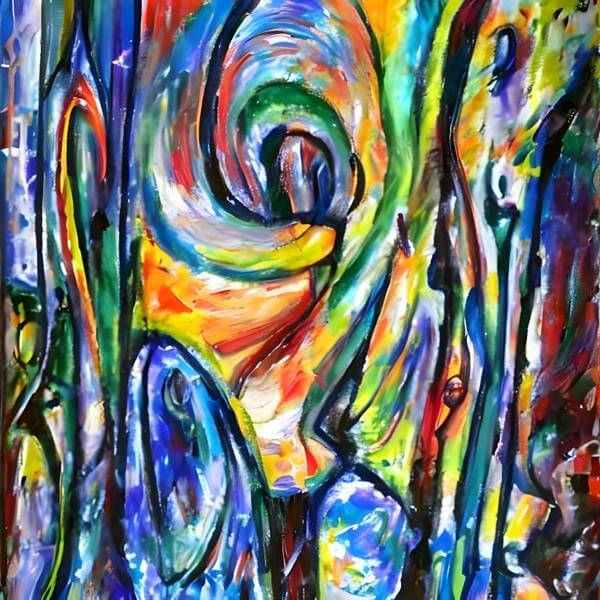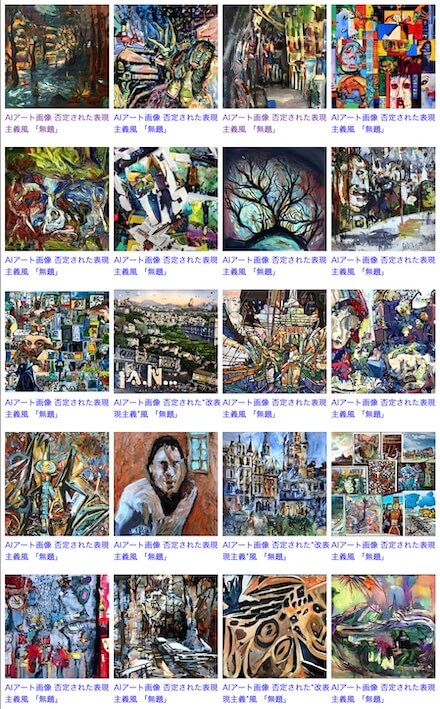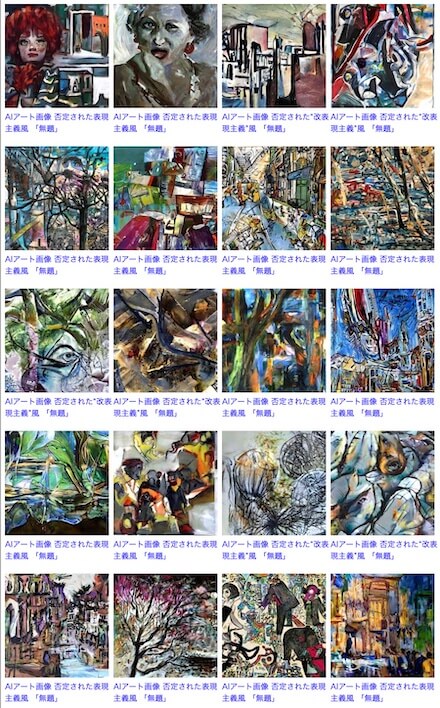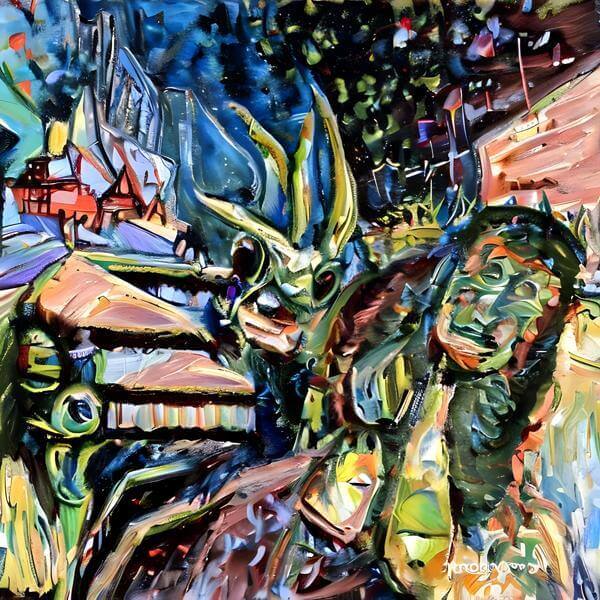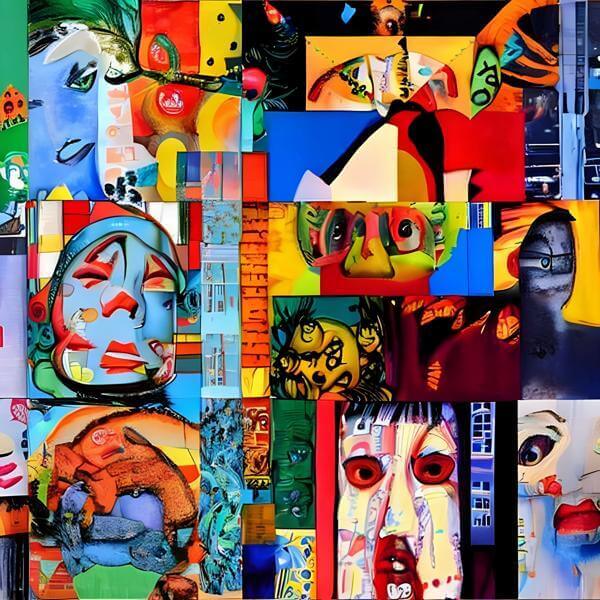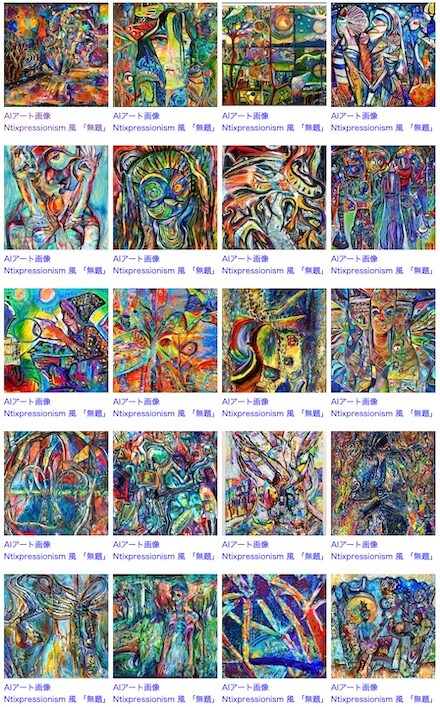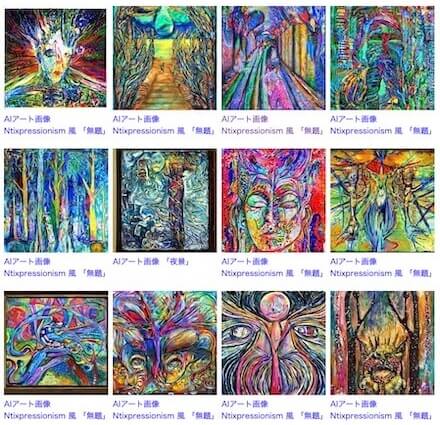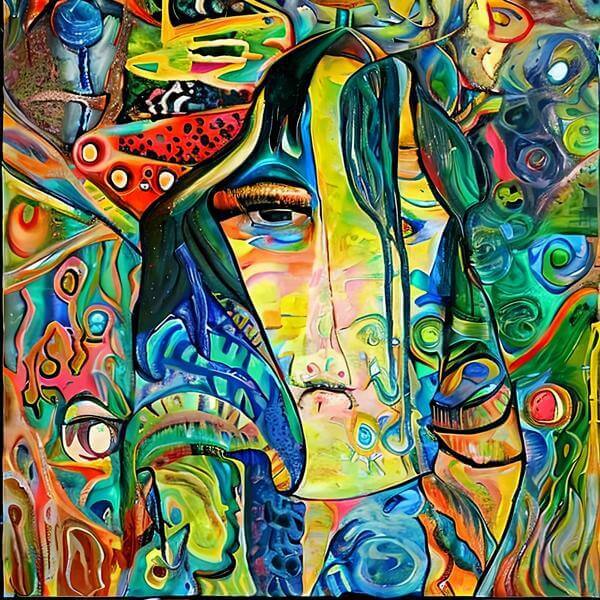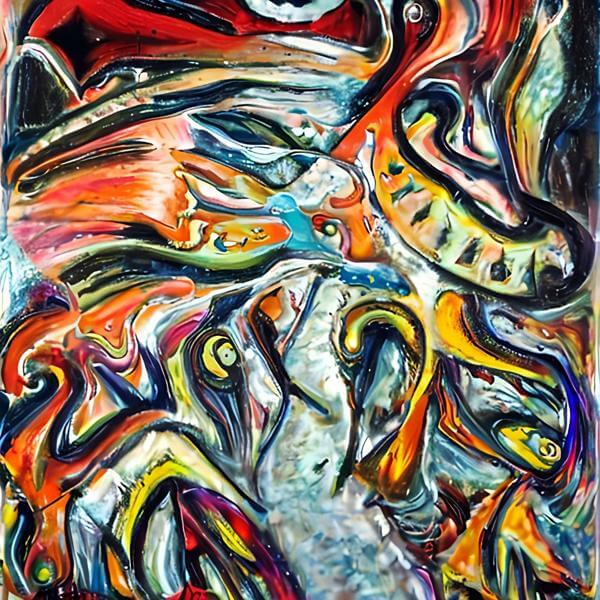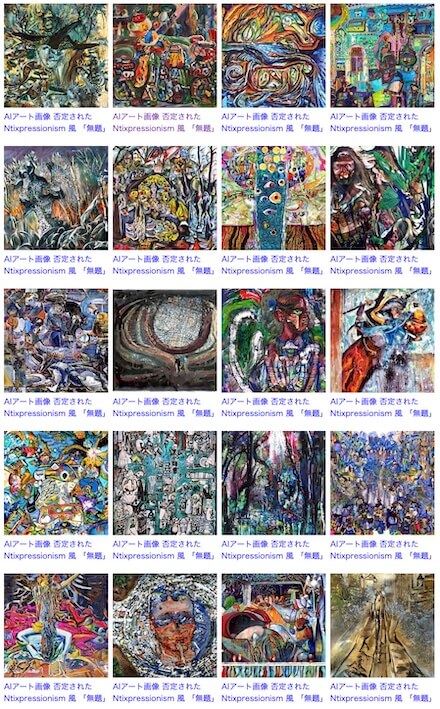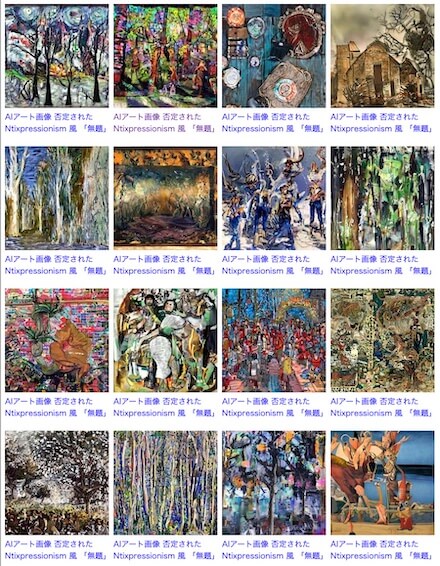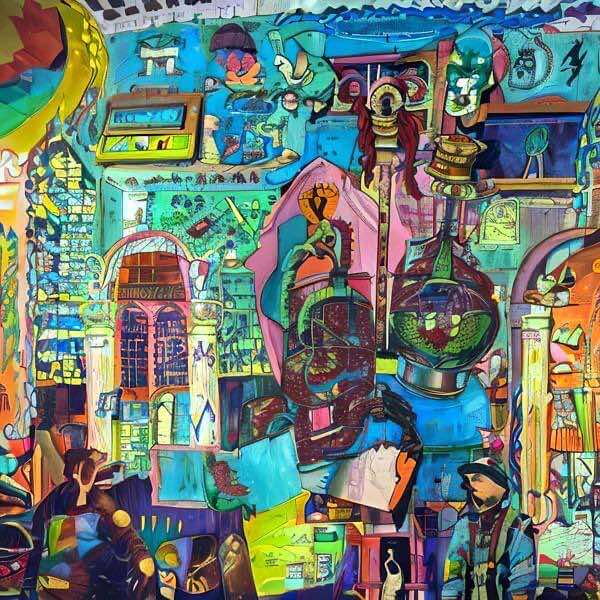🤖🖼 AI Art Blog ―To inspire AI to create paintings― 🅰🅸 🅰🆁🆃
A blog related to original AI artworks.
Diversifying Images by Negating Art Movement Names
By negating the name of a painter, that is, specifying both the positive prompt and the negative prompt with the same painter name, you can obtain a wider variety of images in different painting styles than by specifying only the positive prompt. I wrote about this in “Diversifying Images by Specifying Painter Names in Positive and Negative Prompts,”. The same can be said for art movement names such as Expressionism and Cubism.
Cubism
Let’s first take a look at Cubism and its negation. When only specifying Cubism as the positive prompt, the following images were obtained. These are the first 40 images according to the display order on this website.
Since we cannot see in the thumbnail images, let’s zoom in on two of them.
Although there are some images with different styles, most of them are in the limited style of Cubism. They consist mostly of mosaic-like images created by combining relatively simple shapes. On the other hand, when negating “Cubism,” the following images were obtained. These are the first 40 images once again.
Since we cannot see in the thumbnail images, let’s zoom in on two of them.
You will notice that negating it results in a wider variety of styles and materials being used. While there are still mosaic-like images, the elements vary in shape, and there is a greater diversity of colors. Although there are more intermediate colors used compared to the previous case, some images still use similar color palettes.
Impressionism
Next, let’s take a look at Impressionism and its negation. When only specifying Impressionism as the positive prompt, the following images were obtained. These are the first 40 images.
Since we cannot see in the thumbnail images, let’s zoom in on two of them.
Most of them imitate pointillism and have relatively limited subject matter, such as landscapes with water. On the other hand, when negating “Impressionism” the following images were obtained. These are the first 40 images.
Since it is hard to see in the reduced images, let’s enlarge only two of them.
Although it is difficult to see in the reduced images alone, there are also non-pointillist works. Additionally, both the color and subject matter vary.
Post-Impressionism
Next, let’s take a look at Post-Impressionism and its “negation.” When specifying only “Post-Impressionism” as a positive prompt, the following images were obtained. At the time of writing this article, there are only 15 images available.
Since it is hard to see in the reduced images, let’s enlarge only two of them.
These images mainly depict nature and rural landscapes, and the colors are similar. On the other hand, when “Post-Impressionism” is specified as a negative prompt as well, the initial 40 images obtained are as follows.
Since it is hard to see in the reduced images, let’s enlarge only two of them.
The subject matter predominantly consists of landscapes, but there are several depictions of branching trees that were not present in the previous set. Additionally, the colors vary.
Expressionism
Lastly, let’s take a look at Expressionism and its “negation” as actual art movement names. When specifying only “Expressionism” as a positive prompt, the following images were obtained. The initial 40 images are shown.
Since it is hard to see in the reduced images, let’s enlarge only two of them.
Both figurative and abstract paintings are mixed, but both utilize strong use of red. On the other hand, when “Expressionism” is specified as a negative prompt as well, the initial 40 images obtained are as follows.
Since it is hard to see in the reduced images, let’s enlarge only two of them.
It contains portraits and abstract paintings, both using a strong color scheme with a predominant use of red. In contrast, when “Expressionism” is specified as a negative prompt, the first 40 images obtained are as follows.
Since we cannot see in the thumbnail images, let’s zoom in on two of them.
The subject matter and style are diverse, and there is a wide range of colors. Collage-like expressions are also frequently seen.
Ntixpressionism
What about coined names for art movements? Let’s take “Ntixpressionism” and its “negation” as an example. When only “Ntixpressionism” is specified as a positive prompt, the following images are obtained, totaling 32 images.
Since we cannot see in the thumbnail images, let’s zoom in on two of them.
Although they have an expressionistic style, they have a unique atmosphere. The prefix “nti” may indicate a limitation on expression. “Ntixpressionism” is a coined term based on “Impressionism” and “Expressionism”, but it might be more appropriate to think of it as a fictional artist’s name rather than an art movement.
On the other hand, when “Ntixpressionism” is specified as a negative prompt, the following images are obtained, totaling 36 images.
Since we cannot see in the thumbnail images, let’s zoom in on two of them.
The subject matter and style are diverse, and there is a wide range of colors. Collage-like expressions are also frequently seen. Regardless of whether it is an existing “ism” or not, it is clear that the negation has a role in diversifying the artwork.
Dasyn.com デイシン
Created: 2023-05-17 12:10 Edited: 2025-10-31
